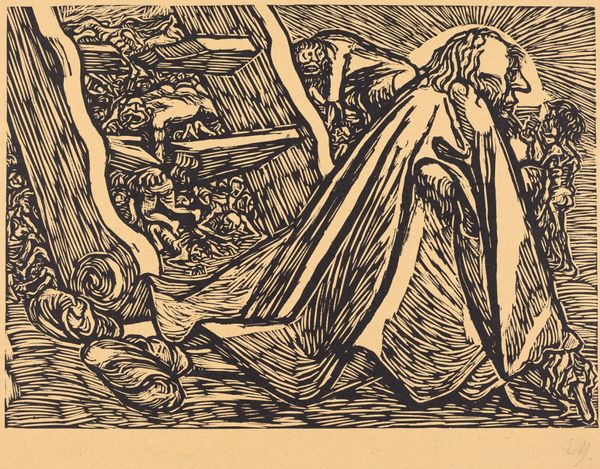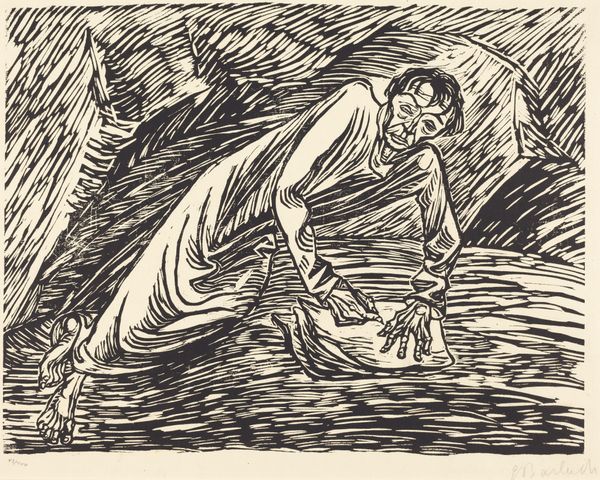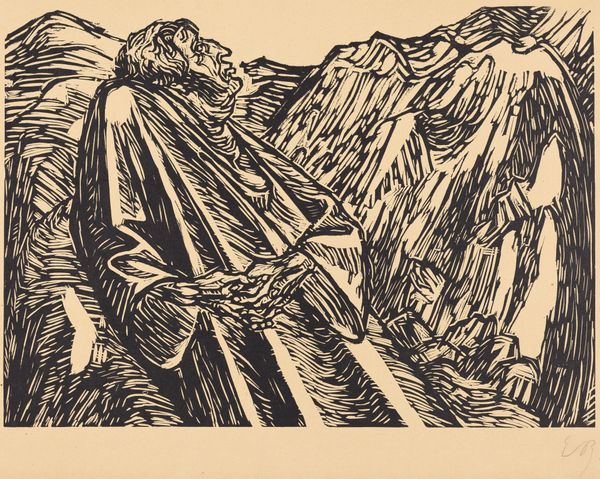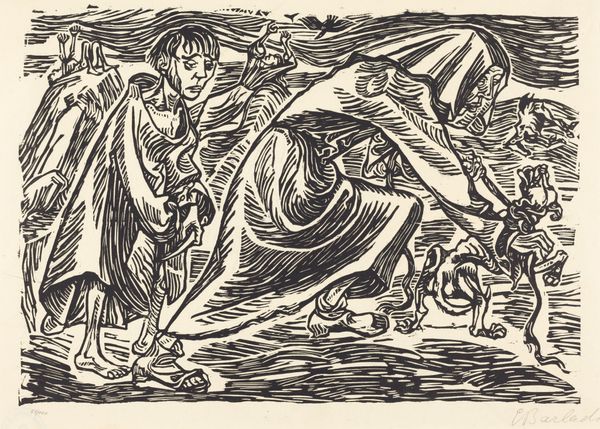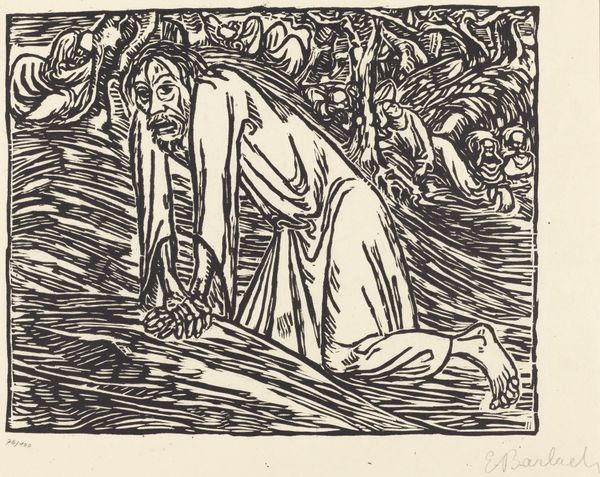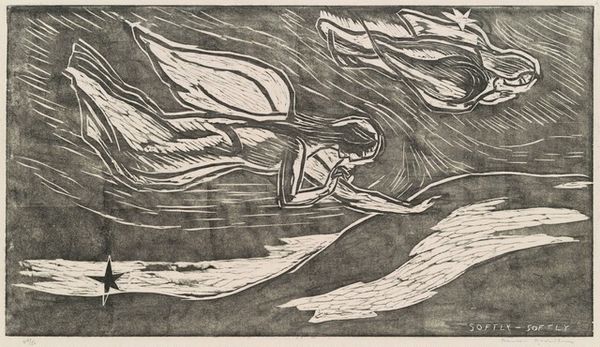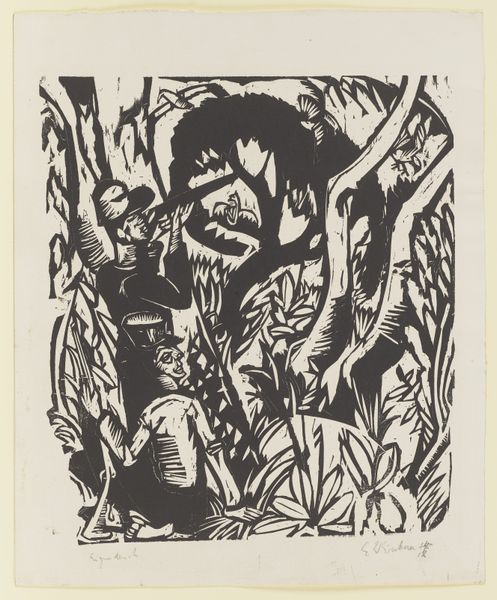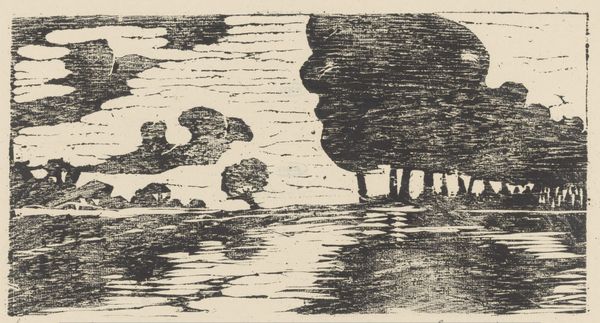
print, woodcut
landscape
figuration
expressionism
woodcut
northern-renaissance
Dimensions: image: 25.5 x 35.8 cm (10 1/16 x 14 1/8 in.)
Copyright: National Gallery of Art: CC0 1.0
Curator: Let's turn our attention now to Ernst Barlach’s 1920 woodcut, "The Seventh Day". Editor: It strikes me immediately. There's a remarkable sense of stillness conveyed despite the dynamic lines. The texture practically vibrates. Curator: Barlach was deeply influenced by expressionism, and the sociopolitical landscape of post-World War I Germany profoundly affected his artistic vision. This work embodies the period's disillusionment and existential questioning. Editor: You can definitely see that anguish rendered in the graphic weight. Look at how the stark black lines carve out the figure's face. It's both powerful and deeply wearying. The composition is fascinating, too, with the figure almost melting into the jagged peaks around him. Curator: The subject, reclining against the mountainous landscape, is meant to represent God resting after Creation. Barlach grapples here with traditional religious iconography. The print was produced amidst profound societal upheaval and increasing secularism, forcing questions around divine power and intervention. Editor: Yes, and note the contrast between the relatively detailed rendering of the figure and the almost abstract quality of the landscape. The use of the woodcut medium allows for that potent graphic simplification. Each mark feels deliberate and loaded. Curator: Indeed. His choice of woodcut is significant. The stark contrast between the cut and uncut areas heightens the emotional impact. Consider the influence of the Northern Renaissance masters—their focus on graphic clarity. That stark style was, for Barlach, a powerful medium for contemporary concerns. Editor: Absolutely. It's hard not to feel the emotional weight embedded in every line. It’s visually arresting, yet somehow incredibly quiet in its message. Curator: A superb analysis! We often forget art serves a public purpose—this piece prompts that consideration. Editor: Agreed. And analyzing the artistic construction opens many interpretations of feeling.
Comments
No comments
Be the first to comment and join the conversation on the ultimate creative platform.
